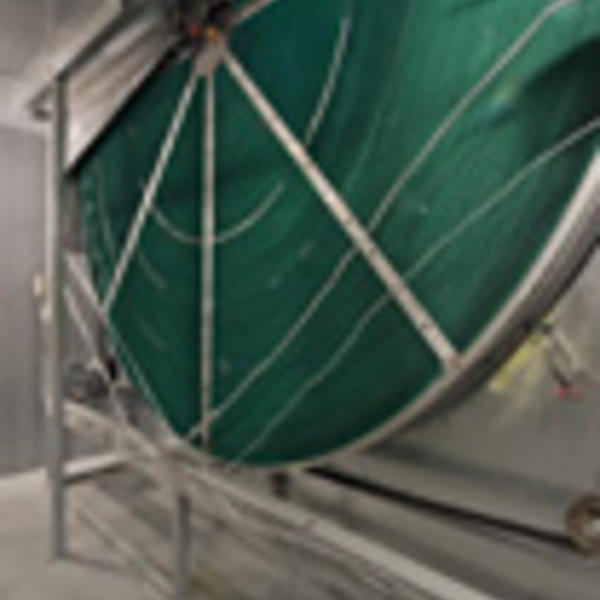The major components of the new Integrated Science Complex at the College of the Holy Cross have earned LEED Gold certification by the U.S. Green Building Council (USGBC), a national organization that certifies buildings that are green and sustainable, and protect the environment. It is the first LEED Gold certified project on campus.
The most ambitious construction project in the College’s history, the $64 million complex consists of the Park B. and Linda Smith Laboratories, a new four-story building that links to the existing science and social science buildings on campus (Beaven, O’Neil, and Swords halls), and a top-to-bottom renovation of Haberlin Hall. With such integrated and visible connections among the sciences, the complex offers many more opportunities for interdisciplinary teaching and learning.
Designed by the architectural firm of EYP Architecture & Engineering, and constructed by BOND, the Smith Labs construction and Haberlin renovation were conceived with the highest standards of energy efficiency and innovative environmentally-friendly elements, including an energy recovery wheel that captures and reuses heat and humidity from air.
“The Integrated Science Complex not only builds on the exceptional tradition at Holy Cross in teaching science and preparing young men and women to embark on careers in research and medicine,” says Rev. Michael C. McFarland, S.J., president of the College. “The entire design and construction project was conceived in keeping with a commitment to sustainability and environmental stewardship. It is meant to teach sustainability as well as to embody it, which is important for our growing environmental studies program. The high marks we received from the U.S. Green Building Council will bring us another step closer to our goals of reducing our carbon footprint and reaching carbon neutrality.”
“Achieving LEED Gold status is a proud accomplishment and demonstrates the commitment the College has towards sustainability,” explains Scott Merrill, director of physical plant and co-chair of the Presidential Task Force on the Environment at the College. “As the first LEED certified construction at Holy Cross, the complex will now stand as the cornerstone of sustainable initiatives on campus.”
The Integrated Science Complex includes numerous features that produce an energy savings of more than 52% in cooling and 39% in heating, lowering total energy consumption by more than 31% over industry standard baseline. Other energy efficient and sustainability features include:
- an active display monitor in the atrium lobby, allowing students and visitors to view the complex’s energy consumption readings and understand how the buildings’s technologies correlate to carbon savings;
- a low-flow fume hood system, integrating variable air volume exhaust valves into research laboratories;
- a high-performance lighting system, incorporating high-efficiency fixtures for additional energy savings;
- nearly 40% of the total building materials manufactured using recycled materials;
- and 56% of the total building materials extracted, processed and manufactured within 500 miles of the project site.
According to EYP Principal and Project Director Jeremy Oberc, “This project has a major impact on the client, creating important new links between the sciences, and mitigating tough site and circulation issues. We are extremely proud to be a part of such a significant project, and are thrilled to have provided the College of the Holy Cross with a sustainable new facility to showcase its extensive science programs to the greater campus community, as well as on a national level.”
Earlier this year, the Integrated Science Complex won a Boston Society of Architects (BSA) Honor Award for Design Excellence. Only eight projects out of 116 received this honor. The project was on display at Build Boston in November. Each year the BSA sponsors awards programs to honor design excellence in Massachusetts, throughout New England and elsewhere.
Also under construction on campus is a new 156-bed townhouse-style residence hall. At the projected cost of $20 million, the residence hall incorporates high energy efficiency standards in all phases of design and construction, and will seek LEED certification upon its completion this summer. As part of the College’s participation in the American College and University Presidents Climate Commitment (ACUPCC), all new construction going forward on campus will be energy efficient and meet or exceed LEED silver standards.
As a charter signatory of the ACUPCC in fall 2007, Fr. McFarland appointed an environmental task force of faculty, staff and students to promote campus practices beneficial to the environment and explore initiatives that reduce the College’s carbon footprint. Holy Cross’ plan calls for a 20 percent reduction in carbon emissions by 2015 and to reach climate neutrality by or before 2040, which is consistent with long range goals set on a global scale.
Related Information:
